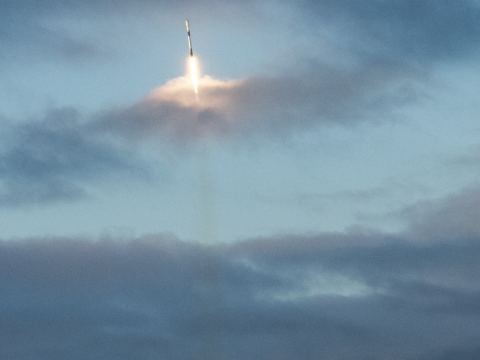News Briefs
Combat Pilots Take Flight in Classroom
Ten graduates of undergraduate pilot training became the first students in a familiarization program for pilots of unmanned aircraft systems (UAS). The four-week Unmanned Aircraft Systems Fundamentals course is designed to give personnel a feel for the air- and ground-based battlespace environment through 100 hours of simulator and academic classes. They are being trained on a computer-based simulation with high-end gaming technology and are learning to integrate aircraft on a cyber-aerial battlefield. Eventually, the training will become more personal as UAS warfighting software will be developed for pilots to use for practice on their home computers.
Visit MyBase Without Leaving Home
The Air Education and Training Command purchased land in Second Life and launched MyBase, which grants the public access to U.S. Air Force information. Officials hope MyBase will attract people interested in learning more about the military branch. The site will include links for enlistment and commissioning as well as contact information for the nearest recruiter. A possible long-term use for the technology is to open a private site in a yet-undetermined three-dimensional world, where airmen can attend virtual training and receive course credit. To access MyBase, visit Second Life and type “MyBase” into the keyword search.
First Glimmer for Airborne Laser
The latest successful test of the Airborne Laser system is moving the in-flight interception of ballistic missiles closer to reality. The ground-based test of the megawatt-class laser was the first one for the entire weapons system, which is housed in a modified 747 cargo aircraft. Held at Edwards Air Force Base, the test completed an engagement sequence by firing the high-energy beam through the entire system in the aircraft. The U.S. Missile Defense Agency manages the Airborne Laser program.
DISA Races Into the Clouds
The Defense
What the Joint Future Holds
The U.S. Joint Forces Command has identified possible threats and opportunities that will challenge the joint force in the future. The Joint Operating Environment 2008, a strategic framework that forecasts these challenges, is a narrative for decision makers. It was issued to initiate discussions about the future international environment and its potential requirements among members of the national and international security community. Trends and disruptions outlined in the report include demographics, economics, energy, cyberspace and globalization.
Interceptor Hovers Through Test
An advanced missile interceptor has passed a hover test. The free-flight hover test of the U.S. Missile Defense Agency’s Multiple Kill Vehicle-L (MKV-L) had a full-scale prototype interceptor fly and maneuver at an altitude of approximately 23 feet for 20 seconds while tracking a target. The MKV-L will deploy in orbit from an interceptor missile to track and destroy ballistic missile warheads and decoys. Lockheed Martin manufactures the MKV-L.
Sea Service Uses Newest Technologies to Survey Sailors About Deploying Newest Technologies
The U.S. Navy is conducting a survey of nearly 15,000 sailors to gather their opinions about teleworking and their use of technologies that could be used to telework. Technologies being considered to facilitate telework include cell phones, iPods and digital cameras as well as computer-based capabilities such as social networking media. Respondents may choose to participate in the survey using their cell phones to text message their answers, enabling researchers to collect data quickly.
The Kingdom of Morocco has issued 1 million biometric identity cards in the last seven months. The biometric ID cards are based on contactless smart card technology designed to ensure maximum security of personal data. Serving as a secure authentication credential for Moroccan citizens, the cards contain personal and biometric data such as digital fingerprints. Residents can present the card instead of birth certificates, residency information and national identification to prove their identity. The Moroccan government plans to issue 20 million smart cards during the next four years.
Tool Measures Electrical Properties on Aircraft
U.S. Air Force and industry researchers have developed and demonstrated the R-Card Characterization (RCC) tool, a portable, nondestructive evaluation technology that measures, in real time, the electrical properties of specialty materials underneath the exterior coating of advanced military aircraft. The RCC enables maintainers to verify material characteristics in inaccessible areas, and it ensures that integrity and performance of the specialty materials remain within established limits. The tool has two major subsystems: the probe unit and the processor unit. The probe contains the radio frequency circuitry to generate the electric field and measure the signal properties. The processor receives the measurements from the probe unit and determines the reflection coefficients.
Submit information for consideration in News Briefs to signalnews@afcea.org.




Comments